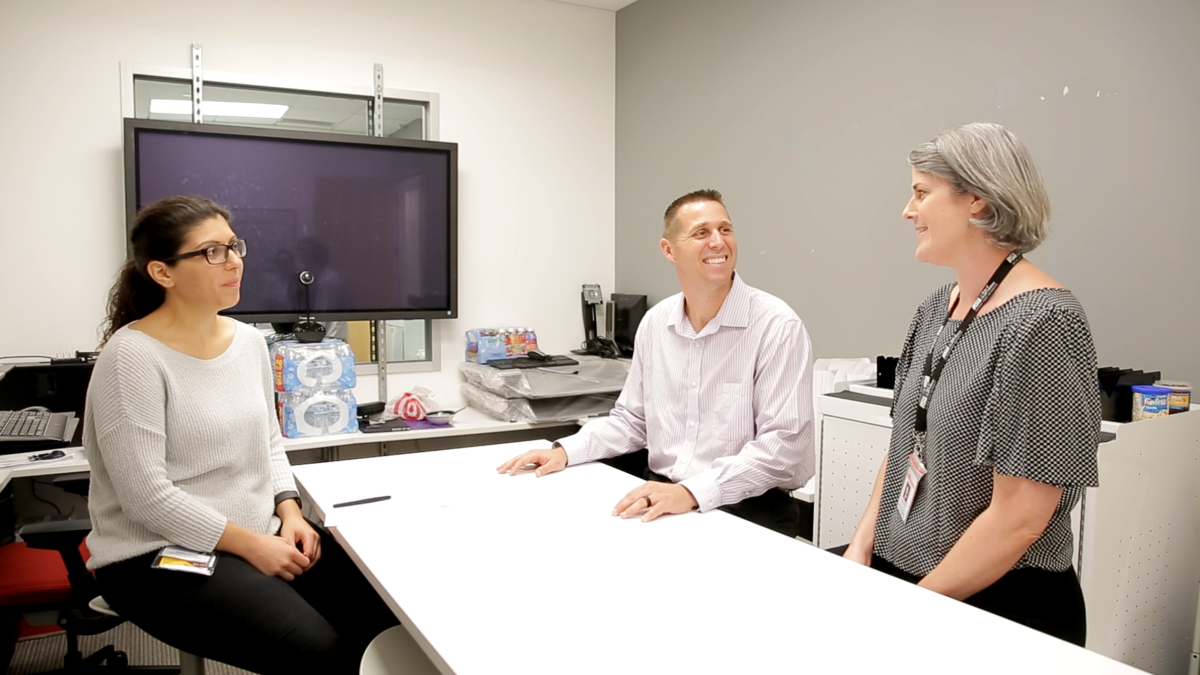Working on your fitness: Physical Activity Guidelines updates call for less sitting

Not so long ago — in the grand scheme of history — humans were constantly on the move. Escaping predators. Hunting for their next meal. Migrating to a more hospitable region. Being physically active wasn’t something we had to put much effort into.
Today, urban environments keep us from becoming mountain lion chow, most of our living essentials are available within a five-mile radius and we have the luxury of driving to get them. Many of us also have jobs that require us to sit for extended periods of time.
“Sitting is just something that’s quite ubiquitous,” said Matt Buman, associate professor at Arizona State University’s College of Health Solutions. “We do it all the time, and the workplace is one of those places where it’s most likely to occur, particularly for people who have office jobs.”
Earlier this year, Buman served as one of nine special consultants for a report that informed an updated version of the national Physical Activity Guidelines, which was officially released at the recent American Heart Association meeting in Chicago.
First published in 2008, the national Physical Activity Guidelines impact public health policies and how we organize to work toward better health outcomes.
This most recent iteration of the guidelines reflect the latest, most accurate scientific evidence regarding physical activity. One of the key updates is a greater recognition of sedentary behavior, defined as sitting.
Buman, an expert on sedentary behavior, is in the midst of a study that hopes to identify interventions and resources that can be implemented in the workplace to reduce the amount of time employees sit during the workday.
Video by Deanna Dent/ASU Now
“We’re finding that without support and resources at the work-site level, it’s difficult to integrate standing and moving into your daily life,” he said.
Too much sitting can lead to health issues such as heart disease, diabetes, stroke and high blood pressure — all of which can be life-threatening. So the need to get people moving is crucial.
For the study, titled “Stand and Move at Work,” Buman and colleagues selected 24 work sites in two states — half in Arizona and half in Minnesota — where sitting during the day was common and randomized them to receive one of two interventions.
One intervention focused just on moving more at work, promoting the idea with messaging and signage, as well as strategies and new policies that allowed for more movement.
The other intervention focused both on moving more at work as well as standing more at work. In addition to the messaging, signage, strategies and policies employed by the “move more at work” intervention, the “move and stand more at work” intervention asked employees to spend about half of their day standing, and supplied them with sit-to-stand workstations to do so.
Preliminary results found that employees who received sit-to-stand workstations stood an extra hour of an eight-hour workday relative to those who did not receive the workstations. This produced reductions in musculoskeletal symptoms (such as back pain), overall improved quality of life, and among those who were at risk for diabetes, a reduction in diabetes risk and weight loss.
Buman feels the study highlights the importance of having an office infrastructure that allows for movement and standing.
“Our results are showing that, at least among office workers who sit most of the day, to be able to get them up and moving, or even just standing, it does require a sit-to-stand workstation,” he said.
Researchers also found that study participants maintained use of the sit-to-stand workstations after a year.
“The reason this study is important is because with this emerging awareness that sedentary behavior is a health risk, it’s really important to determine how you actually get people to sit less,” Buman said.
Currently, he is working with colleagues to establish a workplace research consortium between American, Australian and British researchers that will seek to address international solutions to reduce sitting and increase activity in the workplace.
Top photo: (From left) PhD student Kristina Hasanaj, Associate Professor Matt Buman and Senior Coordinator Rebecca Sanback discuss the new Physical Activity Guidleines. Photo by Deanna Dent/ASU Now
More Health and medicine
Is ‘U-shaped happiness’ universal?
A theory that’s been around for more than a decade describes a person’s subjective well-being — or “happiness” — as having a U-shape throughout the course of one’s life. If plotted on a graph, the…
College of Health Solutions medical nutrition student aims to give back to her Navajo community
As Miss Navajo Nation, Amy N. Begaye worked to improve lives in her community by raising awareness about STEM education and health and wellness.After her one-year term ended last month, Begaye’s…

Linguistics work could improve doctor-patient communications in Philippines, beyond
When Peter Torres traveled to Mapúa University in the Philippines over the summer, he was shocked to see a billboard promoting Arizona State University.“It wasn’t even near the university,” said…